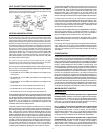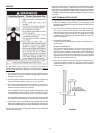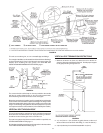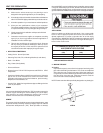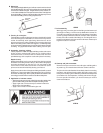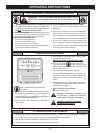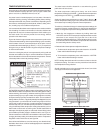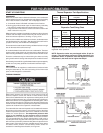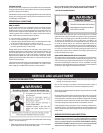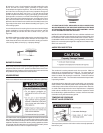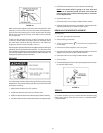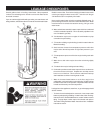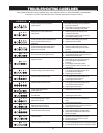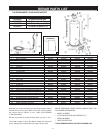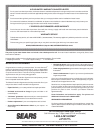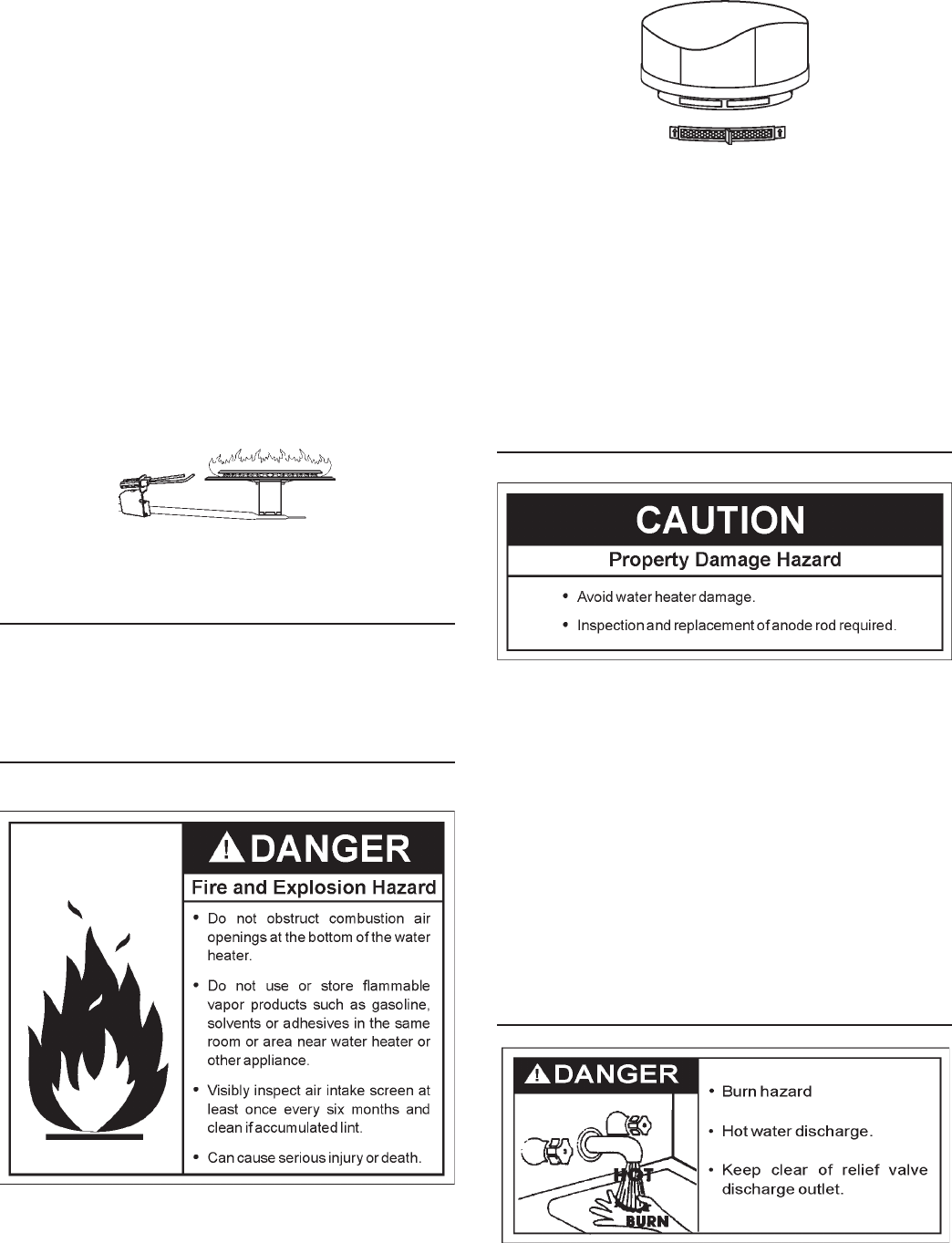
26
At least once a year a visual inspection should be made of the main
burner and the hot surface igniter assembly for proper flame
characteristics and ignition sequences. This can be done by removing
the Outer Door and viewing the main burner operation through the
Viewport on the Inner Door, see Figure 1. The main burner should
provide complete combustion of gas, ignite rapidly, give reasonably
quiet operation, and cause no excessive flame lifting from the burner
ports. If the proper flame characteristics are not evident (see Figure
28), make sure that the flow of combustion and ventilation air is not
blocked on the Air Intake Screen at the base of the water heater (see
Figure 29), the Lint screen on the blower assembly (see Figure 1), and
in the venting system.
You should also check for sooting. Soot is not normal and will impair
proper combustion. A visual inspection of the main burner and HSI
igniter assembly should also be done at least once a year, see
Figure 28.
Soot build-up indicates a problem that requires correction before further
use. Turn “OFF” gas to water heater and leave off until repairs are
made, because failure to correct the cause of the sooting can result in
a fire causing death, serious injury, or property damage.
FIGURE 28.
BURNER CLEANING
In the event your burner or burner air openings require cleaning, turn
the blower switch to the “OFF” position and allow the burner to cool.
Call Sears Service Center to remove and clean the burner and correct
the problem that required the burner to be cleaned.
HOUSEKEEPING
Vacuum around base of water heater for dust, dirt, and lint on a regular basis.
This water heater unit is supplied with a plastic Air Intake Screen that will
filter and prevent lint build-up on the bottom of the flame arrestor of this
heater. To prevent the lint build-up on the arrestor, the lint screen must be
installed on the Base Pan with the “arrows” pointing upwards as shown
in Figure 29. If the Air Intake Screen is missing from this heater, please
contact Sears Service Center for a replacement part.
FIGURE 29.
AT LEAST ONCE EVERY SIX MONTHS A VISUAL INSPECTION
SHOULD BE MADE OF THE AIR INTAKE SCREENS ON THE BASE
OF THE WATER HEATER AND THE BLOWER ASSEMBLY. CLEAN
IF LINT ACCUMULATIONS ARE NOTICED.
INSTALLED IN SUITABLE AREA: To insure sufficient ventilation and
combustion air supply, proper clearances from the water heater must
be maintained. See “Facts to Consider About the Location” section.
Combustible materials such as clothing, cleaning materials, or flammable
liquids, etc. must not be placed against or adjacent to the water heater
which can cause a fire.
ANODE ROD INSPECTION
The anode rod is used to protect the tank from corrosion. Most hot
water tanks are equipped with an anode rod. The submerged rod
sacrifices itself to protect the tank. Instead of corroding the tank,
water ions attack and eat away the anode rod. This does not affect
the water’s taste or color. The rod must be maintained to keep the tank
in operating condition.
Anode deterioration depends on water conductivity, not necessarily
water condition. A corroded or pitted anode rod indicates high water
conductivity and should be checked and/or replaced more often than
an anode rod that appears to be intact. Replacement of a depleted
anode rod can extend the life of your water heater. Inspection should
be conducted by a qualified technician, and at a minimum should be
checked annually after the warranty period.
TEMPERATURE-PRESSURE
RELIEF VALVE OPERATION
The temperature-pressure relief valve must be manually operated at
least once a year.



